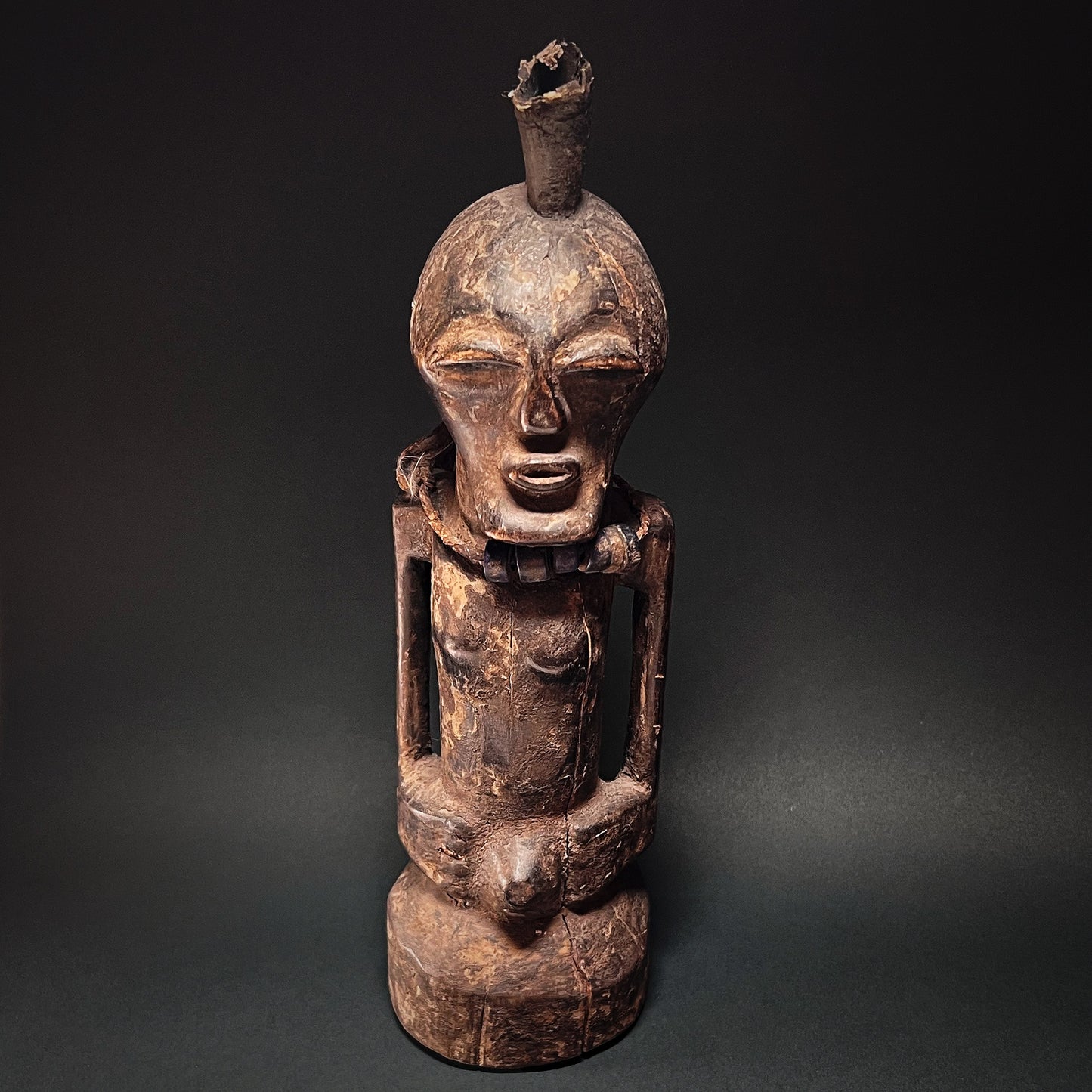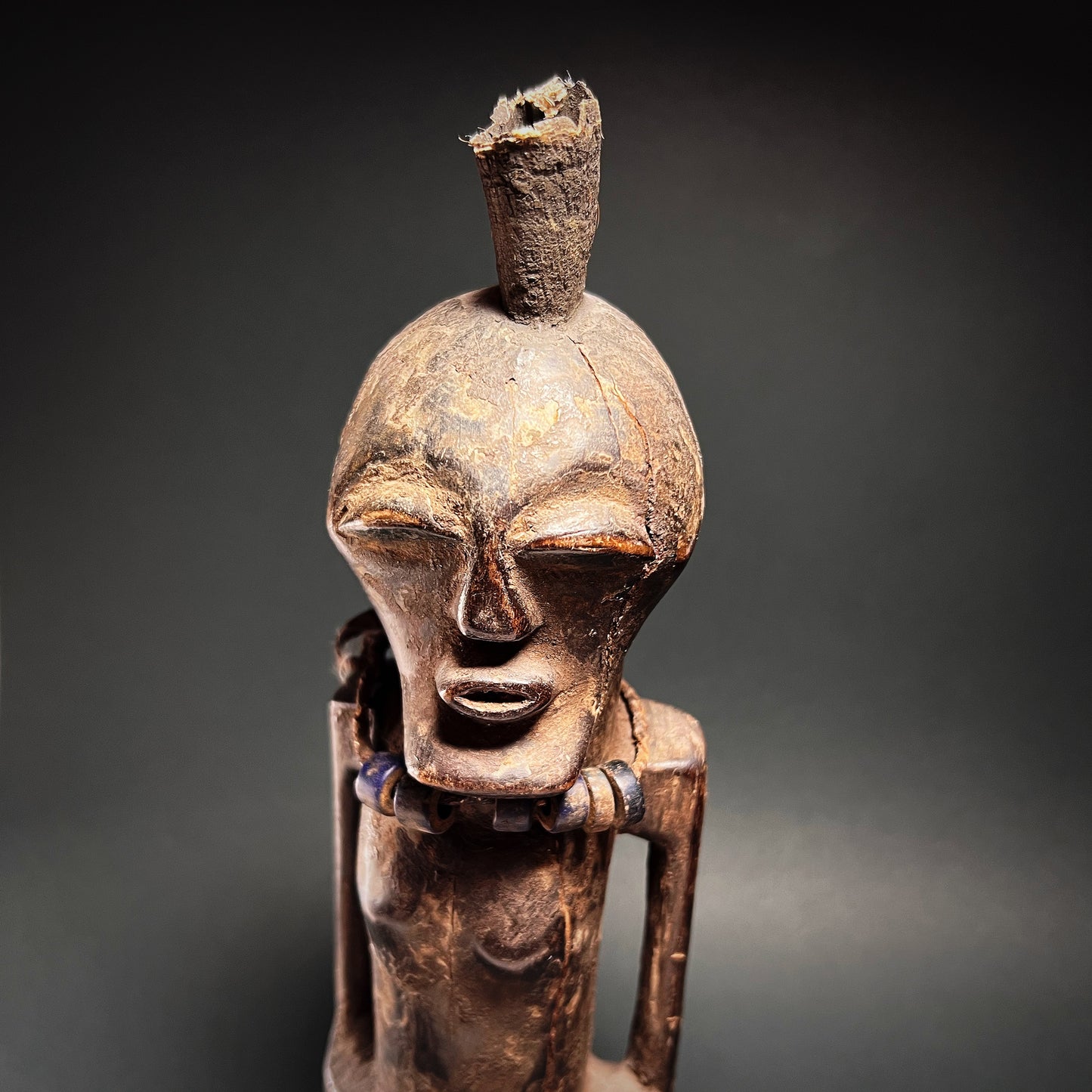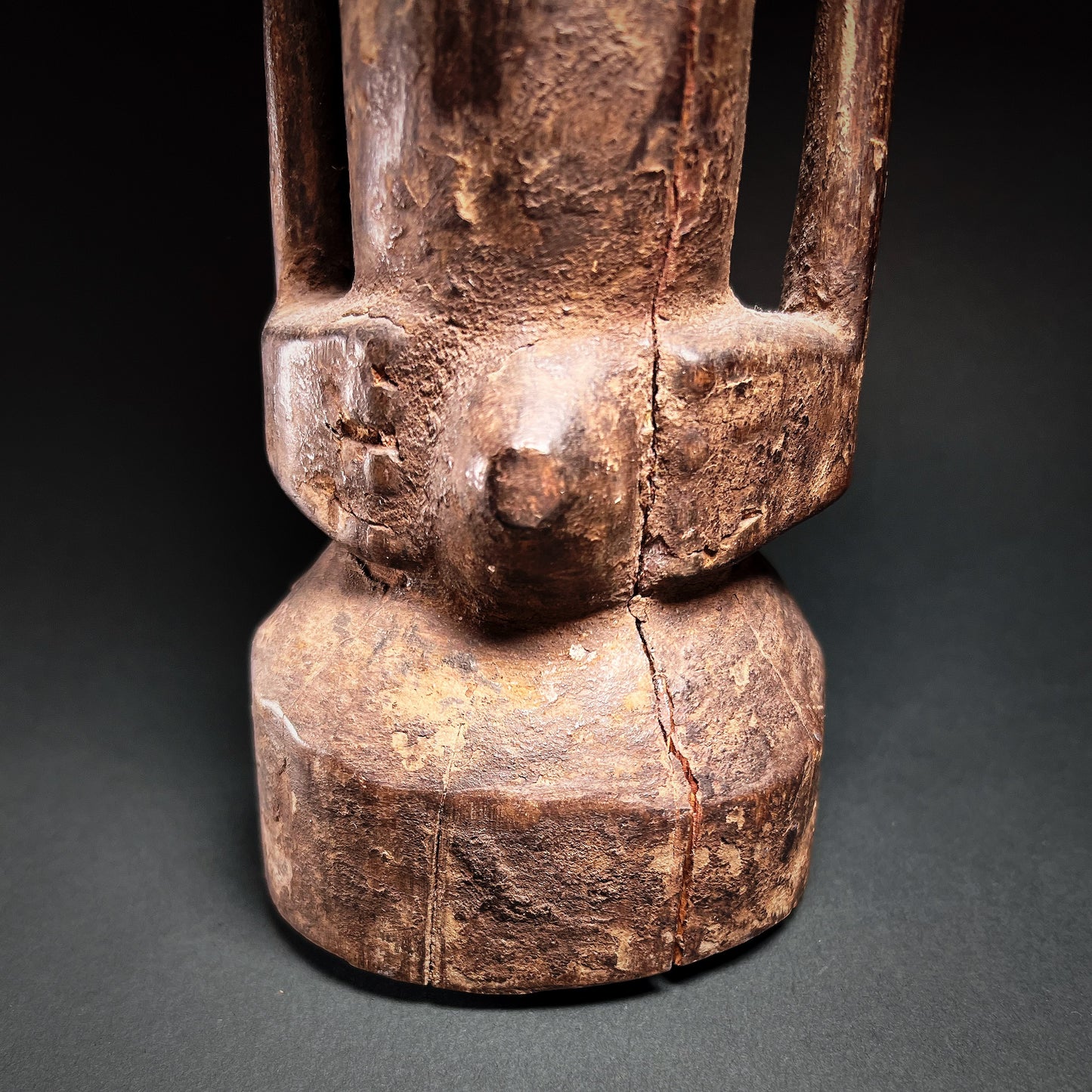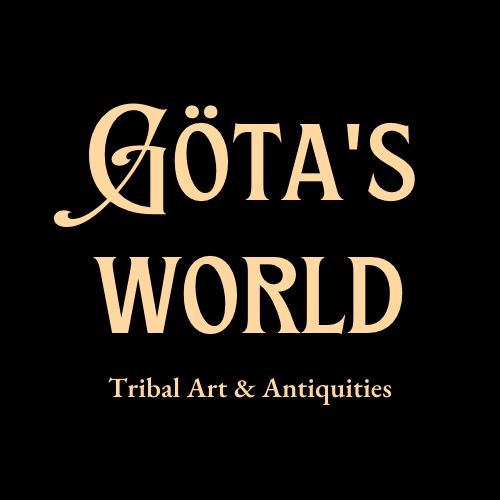Songye Power Half Male Figure (Nkisi)
Songye Power Half Male Figure (Nkisi)
Couldn't load pickup availability
Songye people, mid-20th century, Democratic Republic of the Congo, Central Africa
A superb and imposing Songye power half male figure (nkisi), carved from a single piece of hard brown wood, dyed black and enriched with sacred materials including glass trade beads, snakeskin, and an inverted bushbuck horn set at the top of the head. The head exhibits the classic Songye style, with coffee-bean shaped eyes closed beneath arched brows, a small flat nose, and a protruding rectangular mouth. The cylindrical neck is adorned with a necklace of blue glass beads (bipo), while the broad shoulders and long bent arms frame the forward-projecting abdomen with a prominent navel—an emblem of vitality and continuity. The figure stands upon a rounded bulging base, its presence both balanced and authoritative.
Figures of this type belong to the rich spiritual tradition of the Songye. Minkisi (sing. nkisi) are vessels inhabited by ancestral spirits and empowered through the addition of potent substances (bishimba) created by a spiritual healer (nganga). These ingredients—animal, plant, and mineral in origin—were placed in cavities, tied to the body, or inserted into horns such as the one crowning this figure. The resulting nkisi served to protect individuals and communities from illness, sorcery, conflict, and misfortune, and acted as a conduit through which ancestors could intervene in human affairs.
A powerful and evocative example of mid-20th-century Songye ritual sculpture, combining sculptural refinement with deeply rooted spiritual purpose.
Excellent condition. Surface wear and abrasions commensurate with age and use. Parallel split in wood running across the figure. Encrusted black patina. Traces of libations and sacrificial offerings. Size approx. 28,5cm x 8,6cm x 8,7cm.
Provenance: From the estate of Swedish painter and pop artist Sven Inge Höglund (1935–2008). Foundation for Innovative Art.
For a similar examples see:
Power Figure (nkisi), New Orleans Museum of Art, Accession Number: 97.159 (https://noma.org/collection/power-figure-nkisi-2/)
Male Power Figure (nkishi), Birmingham Museum of Art , Accession Number: 1989.64 (https://www.artsbma.org/collection/male-power-figure-nkishi/)
References and further reading:
Reviewing Power, Process, and Statement: The Case of Songye Figures, Dunja Hersak, African Arts, Vol.43, No.2, pp.38-51, Published UCLA, Summer 2010.
On the Consept of Prototype in Songye Masquerades, Dunja Hersak, African Arts, Vol.45, No.2, pp.12-23, Published UCLA, Summer 2012.
Community Power Figure: Male (Nkisi), Yaëlle Biro, The Metropolitan Museum of Art, 2018.
Songye, Art & Life in Africa, University of Iowa Stanley Museum of Art.





-
Shipping
The shipment will be prepared in the course of 3-5 days and dispatched via Posti Group Oyj or purchased item(s) can be picked up from our shop during the store's opening hours (Tarkk’ampujankatu 4, 00140, Helsinki, Finland). Within the Finland, all items are shipped via Posti Group Oyj unless otherwise requested. We pack the items carefully and mainly in recycled materials because we want to save nature. You will receive the tracking number for your items by e-mail.
-
Returns
Returns and exchange will be accepted within fourteen days (14) of receipt at the purchaser’s cost to include freight and packaging. Items must be returned in the same condition as when they were shipped, and will not be accepted if damaged or altered in any way. Please inform us via email (info@gotanmaailma.fi) or by calling +358408408352 before sending. We do not accept returns more than 14 days after delivery.





